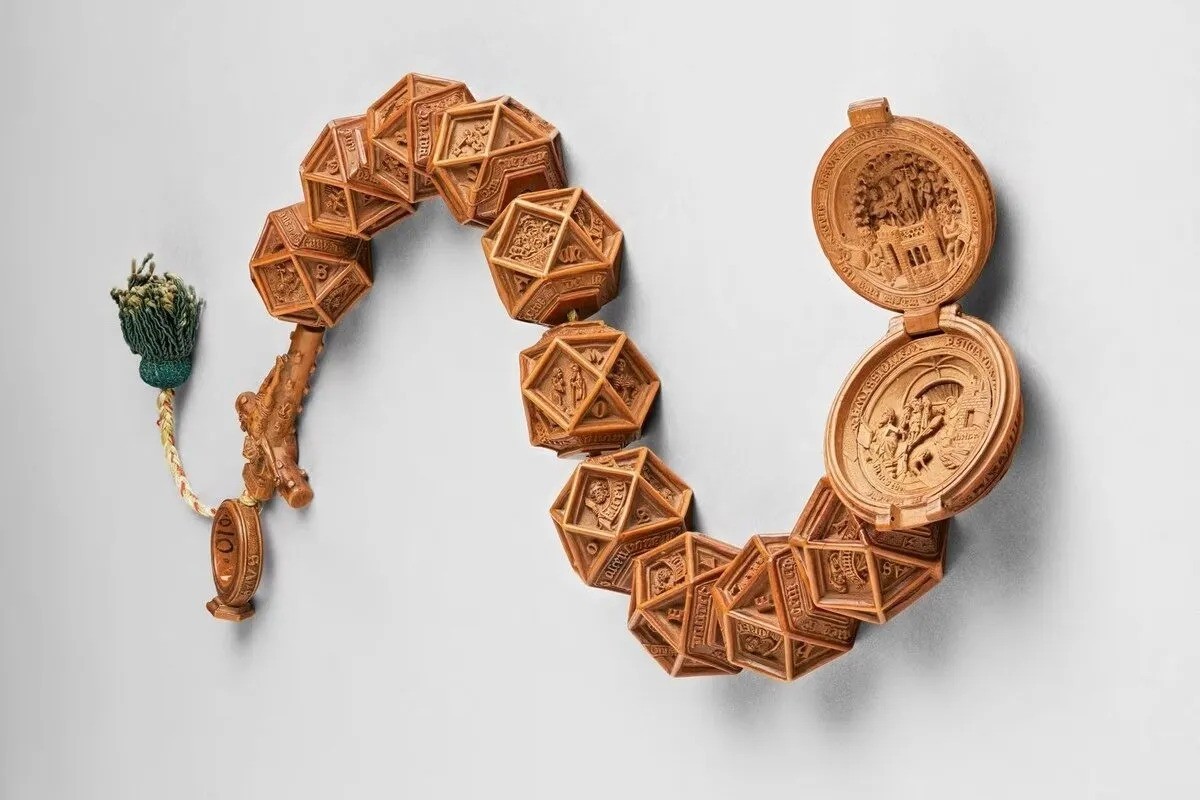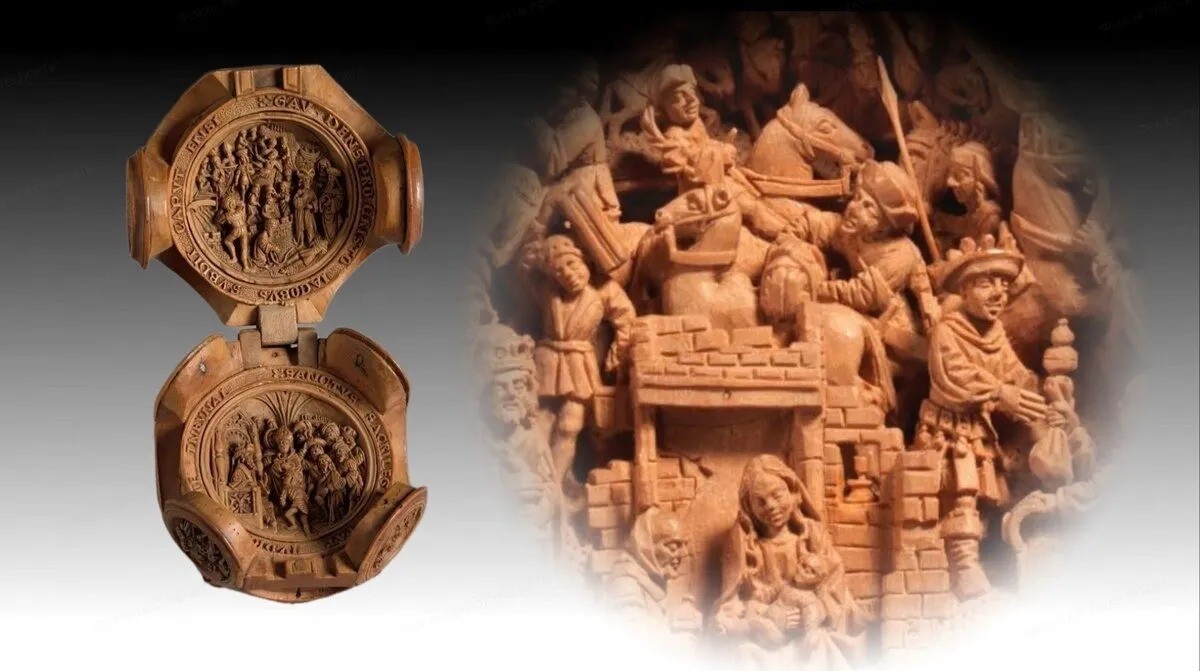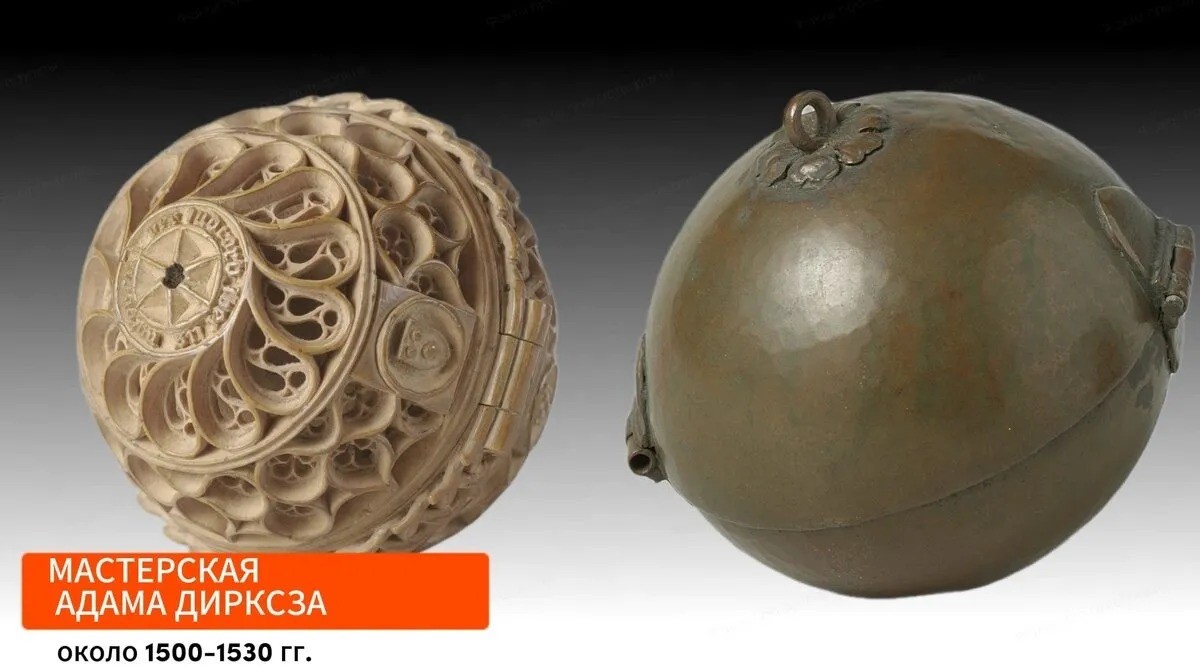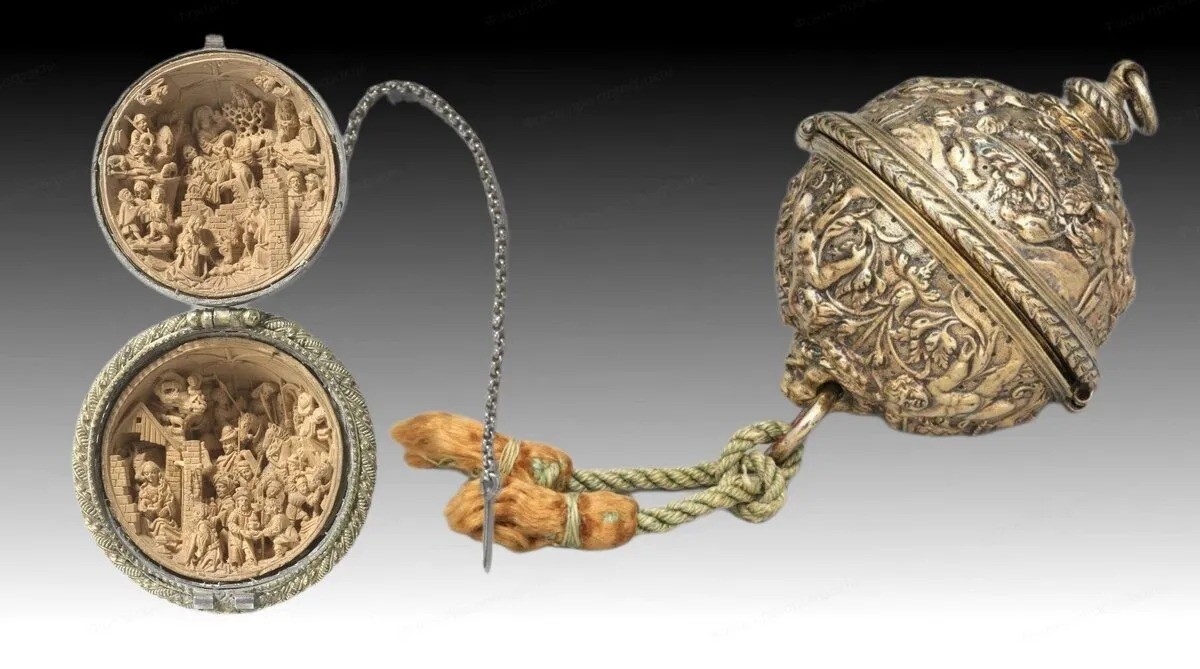The Walnut of Impossible History: When a 16th-Century Mystery Met Modern Science
In 2016, Toronto laboratories confronted a centuries-old puzzle with a 21st-century tool. A micro-CT scanner peered inside a hollow wooden sphere the size of a walnut and revealed dozens of finely carved figures. The detail was astonishing: some strokes were thinner than a human hair. The obvious explanation—magnifying lenses and delicate surgical tools—collided with history, for those technologies did not exist in the early 16th century. The central question emerged: how could human hands, without optical aids, carve such perfect miniatures? The object, known as the prayer nut, is not merely a religious symbol. It is a layered sociocultural phenomenon. In the pre-Reformation era of Northern Europe—especially the Netherlands and Germany—the movement of New Devotion promoted a deeply personal relationship with God, accessible through contemplative thought on Christ's Passion. Prayer nuts became portable altars for the aristocracy and the wealthier burghers.

In This Article:
A Tiny Sacred World: The Prayer Nut as a Multilayer Sociocultural Phenomenon
New hypotheses suggest the minis were popular not only for spiritual search but also for the idea of personal space. In busy, crowded castles and towns, the nut opened in the palm created a micro-desert for private communion with God, much like illuminated prayer books supported private prayer. People carried them in velvet pouches or hung them from belts or rosaries. The opening itself was a ritual: slow unfolding, revealing inner scenes from the Gospel narratives—The Last Supper, Carrying the Cross—a tactile, visual meditation.

A Private Space in a Public World: The Ritual of Opening
The popularity of these miniatures may reflect not only spiritual longing but a growing sense of personal space in crowded, ceremonial settings. Opening a prayer nut created a private moment for reflection amid courtly life. They were carried in velvet pouches or hung from belts and rosaries. The opening was a deliberate ritual: slow unfolding, revealing the scenes within—The Last Supper, the Carrying of the Cross—a tactile, meditative moment that fused art and devotion.
Hands of Many Masters: Anonymous Craft and the Guild Legacy
Art historians identify up to ten distinct 'hands' or stylistic modes, suggesting entire schools or family dynasties specialized in this elite craft. The origins are traced to Dutch workshops, notably the Saint Luke Guild in Antwerp and the master Adam Dircksz, whose 'AD' mark appears on several pieces. Why are most master names lost? Anonymity may have been deliberate. In a culture that valued 'not for oneself but for God's glory,' signing a piece could be seen as vanity. These objects were rare and exclusive, produced for a small circle of patrons, with a local, oral brand rather than a widely known signature.

From Relic to Renaissance: The Prayer Nut in the Digital Age
After the Reformation, demand collapsed under iconoclasm and criticism of church luxury. The prayer nuts migrated from sacred objects to cabinets of curiosities, where they sat among exotic shells, antiques, and scientific instruments. Their religious function yielded to displays of wealth, erudition, and connections to the world of exotic art. Some surviving nuts were rarely opened in major museums, confirming their transition to static contemplative objects rather than everyday tools. Today, digital technology has sparked a renaissance. Projects like the Toronto discovery create precise 3D models from scans, preserving fragile originals and allowing millions to explore interior worlds from every angle—an accessibility unimaginable to the original owners. The prayer nut prompts existential questions: what drove a person to carve scenes visible only under ideal light and with a magnifying glass? Was it fervent faith, or a desire to prove human mastery, or a potent mix of both—an effort to approach the divine through creation and to leave behind a tangible testament of human ingenuity that continues to astonish after five centuries? The prayer nut is not merely an artifact. It challenges our understanding of the history of technology and stands as a quiet but persistent reminder that human genius often outpaces the tools available to it.

